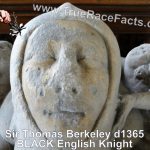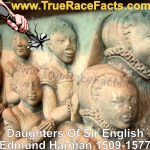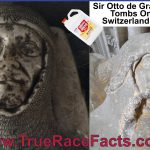1547c. Edward VI King of England – Boy King
- Guinevere Jackson
- 24 August 2022
- 0 Comment
Edward VI, (born October 12, 1537, London, England—died July 6, 1553, London), king of England and Ireland from 1547 to 1553. He was King of England and Ireland at only age ten.
Edward was King Henry VIII’s only legitimate son; his mother, Henry’s third wife, Jane Seymour, died 12 days after his birth. Although Edward has traditionally been viewed as a frail child who was never in good health, some recent authorities have maintained that until several years before his death, he was a robust, athletically inclined youth. His tutors (Sir John Cheke, Sir Anthony Cooke, and Roger Ascham) found him to be intellectually gifted, a precocious student of Greek, Latin, French, and theology. By age 13 Edward had read Aristotle’s Ethics in the original Greek and was translating Cicero’s De philosophia into that language..
On January 28, 1547, Henry VIII died, and Edward, then age nine, succeeded to the throne. Henry had decreed that during Edward’s minority the government was to be run by a council of regency, but in fact Edward’s uncle, Edward Seymour, duke of Somerset, wielded almost supreme power as regent, with the title of protector. Factions soon developed around the king. In 1549 Somerset was overthrown by the unscrupulous John Dudley, earl of Warwick (soon to be duke of Northumberland). Northumberland put Edward forward at the age of 14 as entitled to all the power of Henry VIII, but the young king was the mask behind which Northumberland controlled the government. The measures taken by both Somerset and Northumberland to consolidate the English Reformation, however, agreed with Edward’s own intense devotion to Protestantism.
In January 1553 Edward showed the first signs of tuberculosis, and by May it was evident that the disease would be fatal. Working with Northumberland, he determined to exclude his two half-sisters, Mary and Elizabeth, from the succession and to put Northumberland’s daughter-in-law, Lady Jane Grey, and her male heirs in direct line for the throne. As a result, a power struggle erupted after Edward’s death. Lady Jane Grey ruled for nine days (July 10–19, 1553) before she was overthrown by the more popular Mary I (reigned 1553–58).
Edward displayed a potential for effective administration, but many scholars have felt that, had he lived, his religious zeal and extreme obstinacy might have imprinted a much firmer and more uncompromising Protestantism on the Church of England.
“I’d rather break bread with a powerless racist wearing a KKK hat than a deceiving professor of history wearing a suit and tie. I deem the latter far more dangerous, for he has the power to destroy the mind and soul forever.”
Guinevere H Jackson
Article Citation: Morrill, John S.. “Edward VI”. Encyclopedia Britannica. Accessed 29 August 2022. Coins Gold Coin British Museum CC BY-NC-SA 4.0 Silver Coin of king Edward – Portrait of Edward VI of England, seated, wearing a gown lined in fur (ermine or lynx) over a crimson doublet with the collar of the Order of the Garter and holding a Bible. Wikimedia creative commons
Disclaimer: True Race Facts have made the long overdue honest determination that the King was dark brown, aka BLACK of the Hebrew, Shemitic negro race. Based on his facial phenotype, lips and thick braided hairstyle. Authentic original coins are the most accurate determination to identify the King because he would have approved the coins before they were hammered and issued. There are many ancient FAKE coins on the market, so beware when looking at coins. The deceivers made it their mission to cover up the dark ages, so even history should now be considered pseudo-history.













